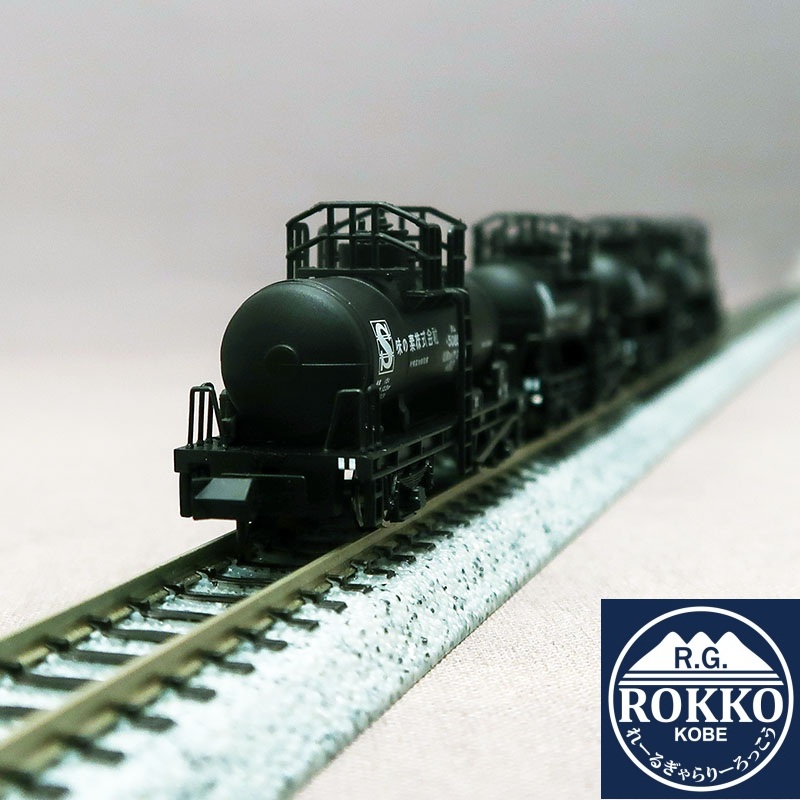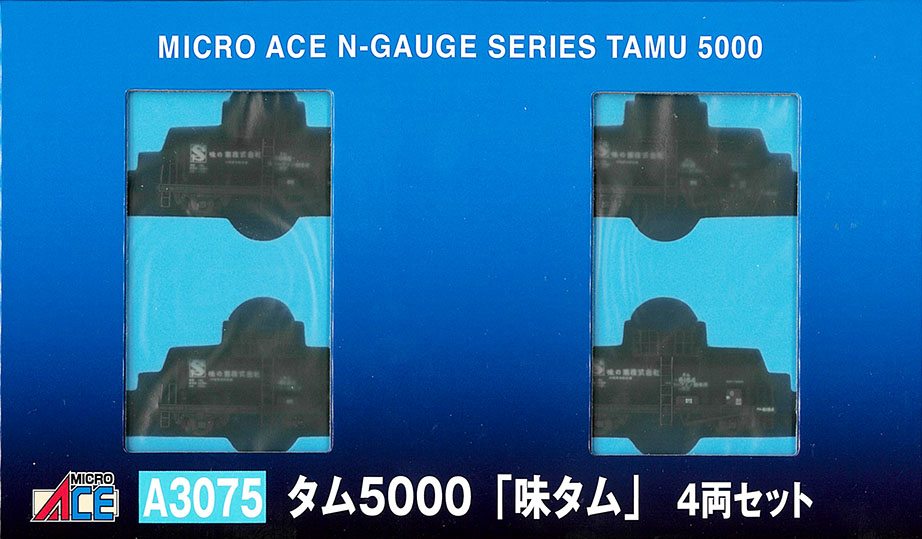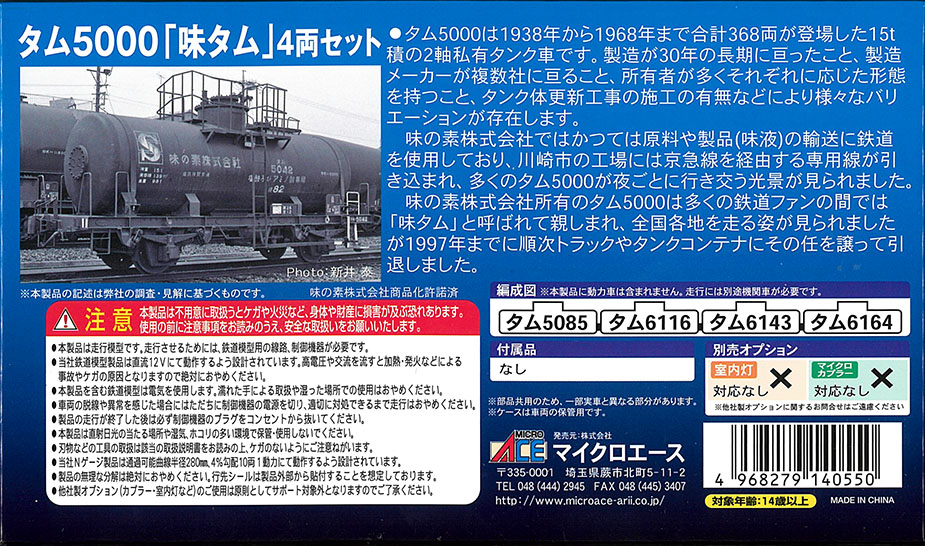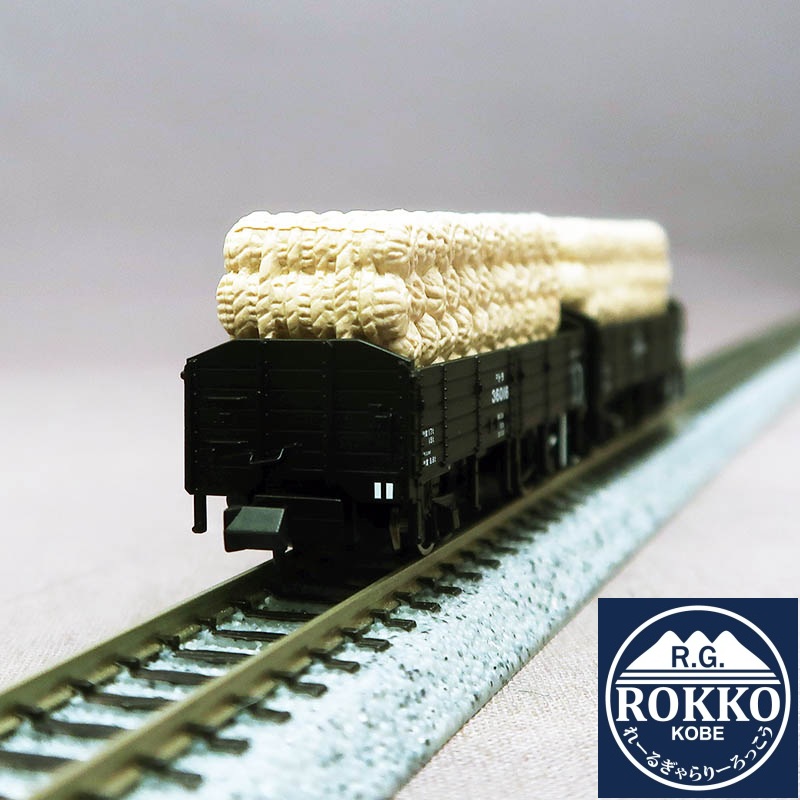(A3075) JNR Tamu5000 (Aji Tam) 4 cars
¥8,500JPY
SKU: MicroAce A3075
Package Volume: 400.00
ItemNumber A3075
JNR Tamu5000 (Aji Tam) 4 cars
3Cars Set
information
Ajinomoto Co., Inc., which has had a factory near Kawasaki Daishi since 1914, transported products and raw materials by truck to Kawasaki Station on the Japanese National Railways, but began construction of a dedicated line to improve transportation efficiency, and in 1947 an 8km dedicated line was completed from Hamakawasaki Station via the city tram and Keikyu Line tracks. In 1952, the company introduced the "Tam 5000" with the start of the revolutionary tank transport method. This can be said to be the predecessor of modern environmentally friendly freight transport, which handles cargo on both the outbound and inbound journeys. The inside of the tank cars that transported the auxiliary raw materials (medicinal liquids) used in the manufacturing process at the time were cleaned, and they were also used to ship the product, amino acid liquid (flavor liquid). The delivery of flavor liquid was also made more efficient, and at its peak, tank cars made detailed deliveries every day to nearly 50 delivery relay stations across Japan, from Asahikawa in the north to Nagasaki in the south, and a vast network was built up in combination with short-distance delivery trucks. After 1960, the transportation of auxiliary ingredients came to an end as the production method shifted to the current fermentation method, but shipments of seasoning liquid continued to increase in line with Japan's rapid economic growth, and at its peak in the 1960s, records show that the company had a total of 222 Tam 5000 cars, with an average of 60 to 80 carloads of cargo per day making a total of three round trips. In 1964, Shiohama Marshalling Yard (now Kawasaki Freight Station) opened, and the route via the city tram was changed. The charming appearance of the short body of the Tam 5000, also known among freight car enthusiasts as "Aji Tam," an abbreviation of "Ajinomoto Tam," was a familiar feature of the Kawasaki waterfront area, and was widely loved throughout the country, along with its markings combining an S with a three. As rail freight subsequently declined and the expressway network developed, rail transport gradually shifted to truck transport, and even into the 1990s, around 80 Ajitam cars continued to transport goods to rail destinations, which had been reduced to five locations nationwide, until 1997, when 45 years of Ajitam transport history came to an end. Some product transport continued using tank containers, and after 2002, taking into account the environmental impact and costs of truck transport, rail transport using ISO tank containers was newly started, and the logistics network built by Ajitam continues to connect dining tables across the country in combination with new-age rail freight.
JNR Tamu5000 (Aji Tam) 4 cars
3Cars Set
information
Ajinomoto Co., Inc., which has had a factory near Kawasaki Daishi since 1914, transported products and raw materials by truck to Kawasaki Station on the Japanese National Railways, but began construction of a dedicated line to improve transportation efficiency, and in 1947 an 8km dedicated line was completed from Hamakawasaki Station via the city tram and Keikyu Line tracks. In 1952, the company introduced the "Tam 5000" with the start of the revolutionary tank transport method. This can be said to be the predecessor of modern environmentally friendly freight transport, which handles cargo on both the outbound and inbound journeys. The inside of the tank cars that transported the auxiliary raw materials (medicinal liquids) used in the manufacturing process at the time were cleaned, and they were also used to ship the product, amino acid liquid (flavor liquid). The delivery of flavor liquid was also made more efficient, and at its peak, tank cars made detailed deliveries every day to nearly 50 delivery relay stations across Japan, from Asahikawa in the north to Nagasaki in the south, and a vast network was built up in combination with short-distance delivery trucks. After 1960, the transportation of auxiliary ingredients came to an end as the production method shifted to the current fermentation method, but shipments of seasoning liquid continued to increase in line with Japan's rapid economic growth, and at its peak in the 1960s, records show that the company had a total of 222 Tam 5000 cars, with an average of 60 to 80 carloads of cargo per day making a total of three round trips. In 1964, Shiohama Marshalling Yard (now Kawasaki Freight Station) opened, and the route via the city tram was changed. The charming appearance of the short body of the Tam 5000, also known among freight car enthusiasts as "Aji Tam," an abbreviation of "Ajinomoto Tam," was a familiar feature of the Kawasaki waterfront area, and was widely loved throughout the country, along with its markings combining an S with a three. As rail freight subsequently declined and the expressway network developed, rail transport gradually shifted to truck transport, and even into the 1990s, around 80 Ajitam cars continued to transport goods to rail destinations, which had been reduced to five locations nationwide, until 1997, when 45 years of Ajitam transport history came to an end. Some product transport continued using tank containers, and after 2002, taking into account the environmental impact and costs of truck transport, rail transport using ISO tank containers was newly started, and the logistics network built by Ajitam continues to connect dining tables across the country in combination with new-age rail freight.




